Features
The Petroleum Bill – its quiet passage and disquieting politics
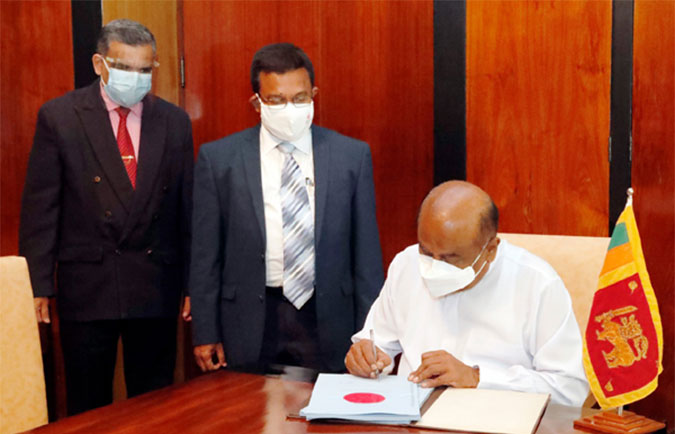
by Rajan Philips
The Petroleum Products (Special Provisions) (Amendment) Bill had a quiet passage in parliament with a majority of 60 votes, 77 for and 17 against. What is disquieting is that only 94 of the 224 MPs (excluding the Speaker) were in parliament for the vote on a Bill on petroleum products, the mismanagement of which turned the country upside down in a matter of months this year. The Bill itself is not some masterpiece of legislation to foster proper management of the petroleum sector, but a simple seeming amendment to the Petroleum Products (Special Provisions) Act No. 33 of 2002. It underscores the point that in the absence of real infrastructure and supporting policy regime, there is no legislative, regulatory or constitutional way out of the crisis in the petroleum sector or any other economic sector.
The legal purpose in both the principal enactment in 2002 and the new amendment is to enable the granting of licenses to entities outside the Petroleum Corporation “to import, export, sell, supply or distribute petroleum.” While the 2002 law vested the licensing power in the “Energy Supply Committee” established under the Energy Supplies Act (No. 2, 2002), the new Amendment transfers that responsibility to a (new) committee appointed by the Cabinet of Ministers. The Amendment also redefines the subject Minister by the words “the Minister” instead of “the Minister in charge of the subject of Power and Energy,” as it was in the original Act.
The Bill was challenged before the Supreme Court over the constitutionality of some of its provisions and the whole Bill itself. The Court held that the Bill itself in one respect and some of the provisions were indeed inconsistent with the constitution but suggested changes to the Bill to remove the inconsistency and the necessity for a two-thirds majority in parliament and even a referendum. Parliament has now passed the bill into law presumably including the changes suggested by the Supreme Court.
Media reports have been calling the amendment as a law to “liberalize the petroleum sector,” obviously taking the cue from the Minister of Power and Energy, Kanchana Wijesekera, who said in parliament that the new Amendment “will allow global suppliers to enter as retail operators, eliminate the monopoly of the Ceylon Petroleum Corporation (CPC) on Jet Fuel and liberalize energy sector.” There is nothing in the eight clauses and four pages of the new Amendment that is not already in the main Act that is going to cause global suppliers to drop everything and rush with petroleum products to cashless Sri Lanka. If at all the new Amendment might be used to create the path of least obstacles to local petroleum wheeler dealers by replacing one obscure committee with another. This aspect of the Bill came up in the hearing before the Supreme Court.
Petroleum Saga
In an earlier article (July 24) I alluded to the saga of the petroleum industry – from pre-nationalization to nationalization in 1961, selective privatization thereafter, and the shift from CPC monopoly to CPC-LIOC duopoly – being a crucial case-study backdrop to the current fuel crisis. Any such case-study should be an exercise in political economy and not constitutional interpretations. Tragically, however, for all the political tumults about the supply and delivery crisis of petroleum products there has not been any corresponding ‘agitation’ in parliament either at the level of soliciting and securing up-to-date information on the supply and status of petroleum products, or at the level having some serious discussion about the petroleum crisis, its causes and potential solutions.
While no one in parliament is showing any serious interest in these matters, it is left to the Supreme Court to step in to fill the void. But filling the void is not solving the crisis and it is not in the business of the solve anything. Nonetheless, the Court’s ruling on the amending bill provides a good summary account of the “existing legal framework” for the regulation (I would add ‘and deregulation’) of the petroleum sector, beginning with the Ceylon Petroleum Corporation Act, No. 28 of 1961.
The current Minister who is now claiming that his new law will eliminate the monopoly of the Ceylon Petroleum Corporation, should know from the Supreme Court ruling (if he is not directly familiar with the CPC Act) that the 1961 law that nationalized the petroleum industry has always included provisions permitting the supply or distribution of petrol, kerosene, diesel oil or furnace oil by non-CPC entities with the approval of the Minister or CPC Board of Directors.
These provisions were not utilized by governments not because, as was suggested during the Court hearing, the CPC Act did not ‘contemplate’ regulatory measures for their application but because no government until after 1977 contemplated using them for the import, supply or distribution by non-CPC entities. This included both the governments of the Left and the Right. In fact, it was the UNP government of Dudley Senanayake that entrenched the monopoly of the CPC by building a new refinery in Sapugaskanda with the capacity to meet virtually the entire domestic demand for petroleum products by importing and refining crude oil from Iran.
Legal Labyrinth
Contemplation, if any, to use non-CPC sources for the supply and distribution of petroleum products began after 1977 with the changes in economic direction and philosophy, under a different UNP government led by PM turned President, JR Jayewardene. His government enacted the Petroleum Products (Regulation and Control of Supplies) Act No. 34 of 1979 to provide for the regulation and control of the distribution and use of petroleum products. Nothing much came out of it, and the JRJ government, as I wrote earlier, baulked from making a serious and considered decision about the petroleum sector (or the electricity sector) – whether to continue the CPC monopoly, ‘liberalize’ the whole sector, or selectively ‘unbundle’ it to create a healthy blend of both public and private sector involvement.
The next set of laws came after more than 20 years, in 2002, when Ranil Wickremesinghe was Prime Minister, co-habiting with President Chandrika Kumaratunga. There were three pieces of Legislation – the Energy Supply Act, the Petroleum Products Act and the Public Utilities Commission of Sri Lanka Act, all enacted in 2002. The Energy Supply Act was enacted to purportedly deal with the emerging energy crisis in the country, and the Act enabled the creation of a new Committee, the Energy Supply Committee, but it also provided for the of regulation of “activities of persons engaged in the importation, exportation, storage, distribution and supply of petroleum and petroleum products.”
However, the Energy Supply Act was in operation only for a period of two years from March 2002 to March 2004, and would seem to have died with the sacking (through dissolution of parliament) of the peace-process government of Ranil Wickremesinghe by President Kumaratunga. At the same time, the Petroleum Products Act that was also enacted in 2002 by the Wickremesinghe government has survived his alternations in and out of power and, according to the Supreme Court, has provided “a more empowered regulatory regime over the petroleum industry.”
The Court ruling suggests that the Petroleum Products Act (PPA) “sought to regulate the downstream petroleum sector by removing the monopoly of the CPC and providing for the issue of licences subject to prescribed conditions.” With respect and in policy parlance, the PPA legislation actually sought to achieve the opposite: to deregulate the petroleum sector! Pertinent to the new amendment to the PPA legislation, the latter provided for the licences for the import, export, sale, supply or distribution of petroleum products to be issued by the Minister on the recommendations of the Energy Supply Committee. The latter committee would somehow seem to have survived the demise of its enabling legislation. As I have indicated at the outset, the new Amendment is replacing the Energy Supply Committee by a new Committee.
A word on the Public Utilities Commission of Sri Lanka (PUCSL) Act to round off this legal labyrinth, and the underlying overlapping of vested interests. The intended purpose of the Commission (and the Act) is to provide “a framework for the regulation of public utilities industries, which originally included (in the Act’s schedules) only the Electricity Industry and the Water Service industry. The Petroleum Industry was added to the PUCSL list four years later, in 2006, just after Mahinda Rajapaksa became the new President.
As the Court duly noted in its ruling, it was unclear “during the hearing whether there was agreement amongst parties on whether the PUCSL did exercise any regulatory power in terms of the PUCSL Act over the petroleum industry.” And the Court concluded that “the PUCSL does not have any power of regulation over the petroleum industry merely upon it being included in the Schedule to the PUCSL Act.”
What next?
The question now is what difference is the new amendment going to make to the operation of the petroleum sector? The Minister might think that he now has a freer hand to break the monopoly of the Ceylon Petroleum Corporation and get non-CPC entities to import and supply petroleum products for local distribution. If the Minister, or the government, wants to really end the monopoly of the CPC, even though there is no monopoly now anyway, it must bite the bullet and privatize the CPC. That way whoever is willing to take over the CPC can use its infrastructure the same way the CPC used the infrastructure of the multinational oil companies after nationalization. In trying to create a parallel system besides the CPC, the government is only leading the country into the worst of both (public and private) worlds. The same way the JRJ government destroyed the bus industry and the school system. Very soon there might be an international university on climate change headed by a new Jennings from Norway!
As for falling into the worst of both worlds, the Supreme Court ruling has laid down the markers to indicate where things easily go wrong. The Court held that in three areas the new Bill was inconsistent with the Constitution and suggested changes. First, the Court directed the new Committee to be restructured to include two additional Ministry Secretaries similar to the Energy Supply Committee. Second, it struck Clause 7, a deeming provision that made any previous act by the Energy Supply Committee legal and unchallengeable in courts. Third, the Court held the whole Bill inconsistent with the Constitution insofar as new Committee was kept outside the purview of Bribery Act. The Court directed the Bill to be changed to include the Committee as a Scheduled Institution under the meaning of the Bribery Act.
Why was it excluded from the purview of the Bribery Act in the first place? The answer is because the real intent behind half-baked attempts at licensing is to create the path of least obstacles to local importers and their foreign suppliers. Even with privatization, it is the responsibility of the government to ensure that proper processes are in place for setting criteria and standards, for competitive bidding, and for the granting of licenses and contracts. That has not been the case at all in Sri Lanka, starting from 1977 and made worse after 2010.
Specific to the petroleum sector, the legislative changes in 2002 under Ranil Wickremesinghe and in 2006 under Mahinda Rajapaksa leaves one to opine if, after all, Mahinda Rajapaksa was continuing from where Ranil Wickremesinghe left. Is it now the other way around? And is national politics now reduced to the two trying to rise together via Ekwa Negitimu? Not to mention, as has been reported, the long distance conversations between Ranil Wickremesinghe and Basil Rajapaksa to consummate a no-contest electoral marriage between the UNP and the SLPP.
Features
Sri Lanka’s Foreign Policy amid Geopolitical Transformations: 1990-2024 – Part I
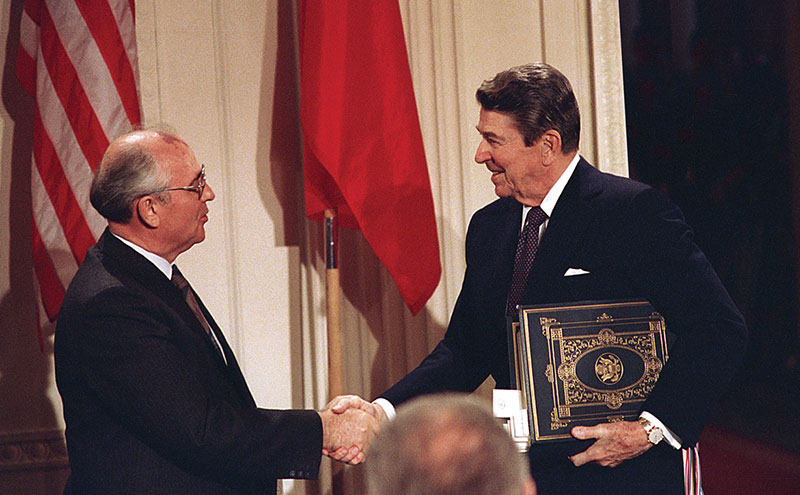
Sri Lanka’s survival and independence have historically depended on accurately identifying foreign policy priorities, selecting viable strategies as a small island state, and advancing them with prudence. This requires an objective assessment of the shifting geopolitical landscape through a distinctly Sri Lankan strategic lens. Consequently, foreign policy has been central to Sri Lanka’s statecraft, warranted by its pivotal location in the Indian Ocean—adjacent to South Asia yet separated by a narrow stretch of water.
Amid pivotal geopolitical transformations in motion across South Asia, in the Indian Ocean, and beyond, the formulation and implementation of Sri Lanka’s foreign policy has never been more critical to its national security. Despite the pressing need for a cohesive policy framework, Sri Lanka’s foreign policy, over the past few decades, has struggled to effectively respond to the challenges posed by shifting geopolitical dynamics. This article examines the evolution of Sri Lanka’s foreign policy and its inconsistencies amid shifting geopolitical dynamics since the end of the Cold War.
First
, the article examines geopolitical shifts in three key spaces—South Asia, the Indian Ocean, and the global arena—since the end of the Cold War, from Sri Lanka’s strategic perspective. Building on this, second, it analyses Sri Lanka’s foreign policy responses, emphasising its role as a key instrument of statecraft. Third, it explores the link between Sri Lanka’s foreign policy dilemmas during this period and the ongoing crisis of the post-colonial state. Finally, the article concludes that while geopolitical constraints persist, Sri Lanka’s ability to adopt a more proactive foreign policy depends on internal political and economic reforms that strengthen democracy and inclusivity.
Shifting South Asian Strategic Dynamics
Geopolitical concerns in South Asia—Sri Lanka’s immediate sphere—take precedence, as the country is inherently tied to the Indo-centric South Asian socio-cultural milieu. Sri Lanka’s foreign policy has long faced challenges in navigating its relationship with India, conditioned by a perceived disparity in power capabilities between the two countries. This dynamic has made the ‘India factor’ a persistent consideration in Sri Lanka’s strategic thinking. As Ivor Jennings observed in 1951, ‘India thus appears as a friendly but potentially dangerous neighbour, to whom one must be polite but a little distant’ (Jennings, 1951, 113).The importance of managing the ‘India Factor’ in Sri Lankan foreign policy has grown further with India’s advancements in military strength, economic development, and the knowledge industry, positioning it as a rising global great power on Sri Lanka’s doorstep.
India’s Strategic Rise
Over the past three decades, South Asia’s geopolitical landscape has undergone a profound transformation, driven by India’s strategic rise as a global great power. Barry Buzan (2002:2) foresees this shift within the South Asian regional system as a transition from asymmetric bipolarity to India-centric unipolarity. India’s continuous military advancements have elevated it to the fourth position in the Global Firepower (GFP) index, highlighting its formidable conventional war-making capabilities across land, sea, and air (Global Firepower, 2024). It currently lays claims to being the world’s third-largest military, the fourth-largest Air Force, and the fifth-largest Navy.
India consistently ranks among the fastest-growing major economies, often surpassing the global average. According to Forbes India, India is projected to be the world’s fifth-largest economy in 2025, with a real GDP growth rate of 6.5% (Forbes, January 10, 2025). India’s strategic ascendance is increasingly driven by its advancements in the knowledge industry. The country is actively embracing the Fourth Industrial Revolution (4IR) and emerging as the Digital Public Infrastructure (DPI) hub of South Asia. However, India’s rise has a paradoxical impact on its neighbours. On one hand, it offers them an opportunity to integrate into a rapidly expanding economic engine. On the other, it heightens concerns over India’s dominance, leaving them feeling increasingly overshadowed by the regional giant.
Despite significant geo-strategic transformations, the longstanding antagonism and strategic rivalry between India and Pakistan have persisted into the new millennium, continuing to shape South Asia’s security landscape. Born in 1947 amid mutual hostility, the two countries remained locked in a multi-dimensional conflict encompassing territorial disputes, power equilibrium, threat perceptions, accusations of interference in each other’s domestic affairs, and divergent foreign policy approaches. The acquisition of nuclear weapons by both countries in 1998 added a new dimension to their rivalry.
The SAARC process has been a notable casualty of the enduring Indo-Pakistani rivalry. Since India’s boycott of the Islamabad Summit in response to the 2016 Uri attack in Kashmir, the SAARC process has remained in limbo. Countries like Sri Lanka, which seek to maintain equally amicable relations with both India and Pakistan, often find themselves in awkward positions due to the ongoing rivalry between them. One of the key challenges for Sri Lanka’s foreign policy is maintaining strong relations with Pakistan while ensuring its ties with India remain unaffected. India now actively promotes regional cooperation bodies in South Asia, excluding Pakistan, favouring broader frameworks such as BIMSTEC. While Sri Lanka can benefit greatly from engaging with these regional initiatives, it must carefully navigate its involvement to avoid inadvertently aligning with India’s efforts to contain Pakistan. Maintaining this balance will require sharp diplomatic acumen.
India’s expansive naval strategy, especially its development of onshore naval infrastructure, has positioned Sri Lanka within its maritime sphere of influence. As part of the Maritime Infrastructure Perspective Plan (MIPP) launched in 2015 to enhance operational readiness and surveillance capabilities, India is developing an alternative nuclear submarine base for the Eastern Command under Project Varsha (Deccan Chronicle, 22.11.2016). This base is located in Rambilli village, 50 km southwest of Visakhapatnam and 1,200 km from Colombo (Chang, 2024). Additionally, INS Dega, the naval air base at Visakhapatnam, is being expanded to accommodate Vikrant’s MiG-29K and Tejas fighter aircraft.
Another key strategic development in India’s ascent that warrants serious attention in Sri Lanka’s foreign policy formulation is India’s progress in missile delivery systems (ICBMs and SLBMs) and nuclear-powered submarines. In 1998, India made it clear that its future nuclear deterrence would be based on a nuclear triad consisting of land-based Intercontinental Ballistic Missiles (ICBMs), submarine-launched ballistic missiles (SLBMs), and strategic bombers (Rehman, 2015). Since then, India has steadily advanced in this direction. The expansion of India’s missile delivery systems, including ICBMs and SLBMs, serves as a reminder that Sri Lanka exists under the strategic shadow of a major global power.
The development of India’s nuclear-powered ballistic missile submarines (SSBNs) accelerated after 2016. The first in this class, INS Arihant (S2), was commissioned in August 2016, followed by the launch of INS Arighat in November 2021. Designed for strategic deterrence, INS Arighat is equipped to carry the Sagarika K-4 submarine-launched ballistic missiles (SLBMs), with a range of 3,500 kilometers, as well as the K-5, a long-range SLBM capable of reaching 5,000 kilometers. The submarine is based at INS Varsha (Deb, 2021).
India has significantly advanced its missile delivery systems, improving both their range and precision. In 2021, it successfully tested the Agni-5, a nuclear-capable intercontinental ballistic missile with a range of 5,000 kilometers. On March 11, 2024, India joined the ranks of global powers possessing Multiple Independently Targetable Re-entry Vehicle (MIRV) technology (The Hindu, January 4, 2022). These advancements elevate the Bay of Bengal as a pivotal arena in the naval competition between India and China, carrying profound political and strategic implications for Sri Lanka, which seeks to maintain equally friendly relations with both countries.
Further, India’s remarkable strides in space research have cemented its status as a global power. A defining moment in this journey was the historic lunar landing on 23 August 2023, when Chandrayaan-3 successfully deployed two robotic marvels: the Vikram lander and its companion rover, Pragyan. They made a graceful touchdown in the Moon’s southern polar region, making India the fourth nation to achieve a successful lunar landing. This milestone has further reinforced India’s position as an emerging great power, enhancing its credentials to assert itself more confidently in South Asian, Indian Ocean, and global power dynamics.
India envisions a stable and secure South Asia as essential to its emergence as a great power in the Indian Ocean and global strategic arenas. However, it does not consider Pakistan to be a part of this stability that it seeks. Accordingly, when India launched the ‘Neighbourhood First Policy’ in 2008 to strengthen regional ties, Pakistan was excluded. India’s ‘Neighbourhood First Policy’ gained renewed momentum after 2015 under Prime Minister Narendra Modi. His approach to South Asia is embedded in a broader narrative emphasising the deep-rooted cultural, economic, and social exchanges between India and other South Asian countries over centuries. India’s promotion of heritage tourism, particularly the ‘Ramayana Trail’ in Sri Lanka, should be viewed through this strategic lens as part of its broader strategic narrative.
Evolving Indian Ocean Geo-political Dynamics
The Indian Ocean constitutes the next geopolitical frame for Sri Lanka’s foreign policy. The Indian Ocean is a huge bay bordered by the Afro-Asian landmass and Australia on three sides and the South Asian peninsula extends into the Indian Ocean basin centrally. Situated at the southern tip of South Asia, Sri Lanka extends strategically into the heart of the Indian Ocean, shaping its geopolitical significance and strategic imperatives for maintaining sovereignty. Historically, Sri Lanka has often been caught in the power struggles of extra-regional actors in the Indian Ocean, repeatedly at the expense of its independence.
Sri Lanka’s leadership at the time of independence was acutely aware of the strategic significance of the Indian Ocean for the nation’s survival. The first Prime Minister D.S. Senanayake, who was also the Minister of Defence and External Affair, stated in Parliament that: “We are in a dangerous position, because we are on one of the strategic highways of the world. The country that captures Ceylon would dominate the Indian Ocean. Nor is it only a question of protecting ourselves against invasion and air attack. If we have no imports for three months, we would starve, and we have therefore to protect our sea and air communications” (Hansard’s Parliamentary Debates, House of Representative. Vol. I, 1 December 1947, c. 444)
As naval competition between superpowers during the Cold War extended to the Indian Ocean, following the British naval withdrawal in the late 1960s, Sri Lanka, under Prime Minister Sirimavo Bandaranaike, played a key diplomatic role in keeping the region free from extra-regional naval rivalry by mobilising the countries that were members of the Non-Aligned Movement (NAM). In 1971, Sri Lanka sponsored a proposal at the UN General Assembly to establish the Indian Ocean as a Peace Zone (IOPZ). While the initiative initially gained traction, it stalled at the committee stage and ultimately lost momentum.
The maritime security architecture of the Indian Ocean entered a new phase after the end of the Cold War. The United States became the single superpower in the Indian Ocean with an ocean-wide naval presence bolstered by the fully fledged Diego Garcia base. Correspondingly, the regional strategic linkages that evolved in the context of the Cold War were eventually dismantled, giving way to new strategic relationships. Additionally, three key developments with profound implications for Sri Lanka should be noted: India’s projection of political and naval power into the deeper Indian Ocean, China’s rapid economic and military rise in the region, and the entry of other extra-regional powers into Indian Ocean politics. Although Sri Lanka adopted a broader strategic perspective and a more proactive foreign policy in the 1970s, its approach to geopolitical developments in the Indian Ocean in the post-Cold War era became increasingly shaped by domestic challenges—particularly countering the LTTE threat and addressing post-war exigencies.
India’s Expanding Naval Diplomatic Role in the Indian Ocean
Parallel to its strategic rise, India has intensified its engagement in the broader strategic landscape of the Indian Ocean with renewed vigor. This expansion extends beyond its traditional focus on the South Asian strategic theatre, reflecting a more assertive and multidimensional approach to regional security, economic connectivity, and maritime diplomacy. India’s active participation in multilateral security frameworks, infrastructure investments in critical maritime hubs and strategic alignments with major global powers signify its role in the changing naval security architecture of the Indian Ocean. India’s shifting strategic posture in the Indian Ocean is reflected in the 2015 strategy document Ensuring Secure Seas: Indian Maritime Security Strategy. It broadens the definition of India’s maritime neighbors beyond those sharing maritime boundaries to include all nations within the Indian Ocean region (Ensuring Secure Seas, p. 23).
In 2015, Indian Prime Minister Narendra Modi launched his signature Indian Ocean diplomacy initiative, Security and Growth for All in the Region (SAGAR) to foster trust and transparency, uphold international maritime norms, respect mutual interests, resolve disputes peacefully, and enhance maritime cooperation. Strategic engagement with the littoral states in the Indian Ocean region, especially Sri Lanka, the Maldives, Seychelles, and Mauritius and Madagascar has emerged as a key component of India’s Indian Ocean naval diplomacy.
The Seychelles archipelago, located approximately 600 miles east of the Diego Garcia base, holds particular significance in India’s maritime strategy. During Prime Minister Narendra Modi’s official visit to Seychelles in March 2015, India and Seychelles signed four agreements. A key strategic outcome of the visit was Seychelles’ agreement to lease Assumption Island, one of its 115 islands, to India—a move that reinforced Seychelles’ alignment with India’s broader naval diplomacy in the Indian Ocean
Similarly, Mauritius holds a central position in India’s naval diplomacy in the Indian Ocean. During Prime Minister Modi’s visit to Mauritius in March 2015, India signed a Memorandum of Understanding with Mauritius to establish a new base on North Agalega Island, a 12-kilometer-long and 1.5-kilometer-wide Island. The base is crucial for air and surface maritime patrols in the southwest Indian Ocean. It will also serve as an intelligence outpost. In September 2016, defense and security cooperation between India and Mauritius deepened alongside the signing of the ‘Comprehensive Economic Cooperation Partnership Agreement’ (CECPA).
India’s expanding strategic interests across the Indian Ocean are reflected in its growing economic, educational, and defense collaborations with Madagascar. In 2007, India established its first overseas listening post in northern Madagascar to monitor shipping activities and intercept marine communications in the Indian Ocean. This initiative provided India with a naval foothold near South Africa and key sea-lanes in the southwestern Indian Ocean. The significance of India’s defense ties with Madagascar is further highlighted by Madagascar’s participation in China’s Belt and Road Initiative (BRI). As a crucial hub along the Maritime Silk Road connecting Africa, Madagascar’s strategic importance is underscored in the broader geopolitical landscape.
Another element of India’s expanding naval diplomacy in the Indian Ocean is its participation in both unilateral and multilateral anti-piracy operations. India’s commitment to regional security was reinforced in 2008 when it established a ‘Strategic Partnership’ with Oman, securing berthing and replenishment facilities for its navy, along with a strategically significant listening post in the Western Indian Ocean. India’s naval presence in the Arabian Gulf gains additional significance amid reports of a new Chinese naval base in Djibouti and recent submarine deployments. Successful anti-piracy missions in the western Indian Ocean underscore India’s growing influence in the region’s evolving naval security architecture.
India increasingly views its vast Diaspora as a soft power tool to bolster its status as an Indian Ocean power. In June 2014, it launched the Mausam project to reinforce its cultural ties across the region, showcasing its heritage, traditions, and contributions to global arts, literature, cinema, yoga, and cuisine. This initiative complements India’s expanding naval diplomacy and strategic presence in the Indian Ocean. Over the years, it has established listening facilities, airfields, and port infrastructure in key locations such as northern Madagascar, Agaléga Island (Mauritius), and Assumption Island (Seychelles). This has led India Today to ask: “Could this mark the emergence of an Indian ‘String of Flowers’ to counter China’s ‘String of Pearls’?” (The be continued)
by Gamini Keerawella
Features
Greener Pastures, Mental Health and Deception in Marriage:
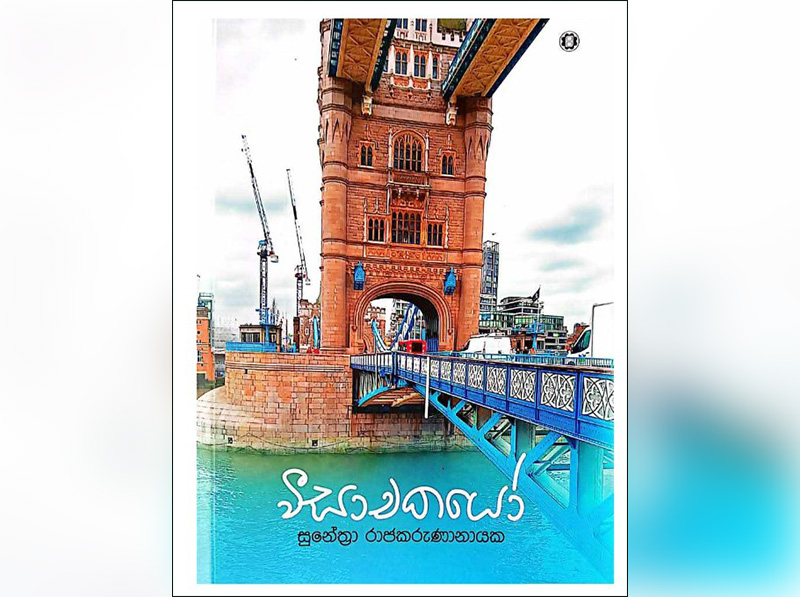
Exploring Sunethra Rajakarunanayake’s Visachakayo
Sunethra Rajakarunanayake’s Sinhala novel Visachakayo (published in 2023) is a thriller in its own sense due to its daring exploration of social themes that modern Sinhala writers fail to touch. To me, the novel is a mosaic that explores pressing issues that middle-class Sri Lankans go through in the 21st Century. The narrative is seen from the perspective of Akshara, a Tamil girl whom the reader first meets in an infamous ‘Visa Queue’ to get her passport to go to England.
Akshara lives with her grandmother ‘Ammamma’ and her aunt ‘Periyamma’ (the younger sister of her mother). Both Ammamma and Periyamma look after her in the absence of her mother, Chinthamani who passed away a long time ago. Akshara’s father lives in Jaffna, with the kids of the second marriage. Later, we are told that Akshara’s father had to marry the second wife due to the loss of his wife’s first husband, who was an LTTE cadre. The second marriage of men seems to be a common theme in the novel due to their commitments to the family as an act of duty and honour.
The most iconic character in the novel is Preethiraj, ‘the man with a big heart’ who functions as a father figure to the other characters in the novel. It is through Preethiraj’s memory that the reader becomes aware of sociological themes in the novel: displacement and immigration, the institution of marriage and mental health issues. Preethiraj (fondly known as Preethi) is the son of Pushpawathi, the second wife of Akshara’s grandfather. Preethi goes to Royal College, but he has to relocate to Jaffna in 1958. Preethi endures social injustice in both public and private spheres. His studious sister, a medical student, labels him as a ‘lunatic’, while his mother condemns him as the ‘odd one’.
The novel intersects between the three themes: immigration and displacement, mental health issues and the institution of marriage. Almost all the characters have to go through displacement, suffer from intricacies of love laws and marriage rules like in The God of Small Things by Arundathi Roy. The writer offers a nuanced analysis of these three themes. For example, take mental health issues. The novel portrays a spectrum of mental health issues, such as schizophrenia, psychosis, Othello Syndrome, depression, autism and even malingering. At times, the representation of such ailments is extremely sarcastic:
“Hm… Canadian citizenship is an easy solution to secure those opportunities. However, unless I am asked to intervene, I will not meddle with their affairs. The son of one of my friends was introduced to a pretty girl. They liked her, not because of her money, but because of her looks and her ability to play the piano. But later, they discovered she has schizophrenia. Now their son follows whatever she says to save the marriage. My friend says she has lost her son” (p.20).
“Those opportunities” refer to material wealth including money and property in Colombo. Here, Rajakarunanayake does not fail to capture the extreme materialism and consumerism. However, in general, her representation of human follies is extremely humane.
The title ‘Visachakayo’ is another interesting coinage that reflects the plight of Sri Lankans who migrate to the ‘global north’ in search of greener pastures. Akshara’s friend, Subhani, who has migrated to England, explains that the term ‘Visachaya’ captures the in-between status of immigrants who are waiting for PR in a foreign country. Subhani mockingly says that they are equal to beggars who beg for visas. Subhani’s coinage and other accounts of Sri Lankan immigrants in England, the novel shows how difficult it is for an immigrant from the ‘global south’ to fight for a living in a country like England where immigrants come to resolve their financial struggles back home.
The novel is an eye-opener in many ways. First, it is an attempt to bridge the gap caused by the Sinhala-Tamil ethnic strife. It is also a cultural mosaic that captures both the joys and sorrows of Sinhala, Tamil and Burgher families in Sri Lanka. The novel also delves into mental health issues, categorically tied to marriage, a daring task even for a seasoned writer. However, Rajakarunanayake’s writing style compels the reader to adopt a more humane and empathetic approach towards individuals grappling with mental health challenges at various stages of their lives. The linguistic technique of using ‘ne’ tag at the end of sentences creates a conversational tone, making the narrative as if it is a conversation between a therapist and a patient. Her writing style also resembles that of Sri Lankan and Indian diasporic writers, a style that is used when writing about the motherland in exile, of which food becomes a critical trope in the narrative that unites the characters who live in exile.
Rajakarunanayake has done a commendable job in the representation of social issues, making this novel a must-read for anyone who is interested in researching social dynamics of contemporary Sri Lanka. It soon needs to be translated into English which will offer a unique experience to Sri Lankan English and international readers. A good book is something that affects the reader. Visachakayo has this quality, and it makes the reader revisit the past, reflect on the present and anticipate the future with hope for humanity just as Preethi does regardless of hardships he endured in the theatre of life.
By C. M. Arsakulasuriya
Features
A strategy for Mahaweli authority to meet future challenges amidst moves to close it down
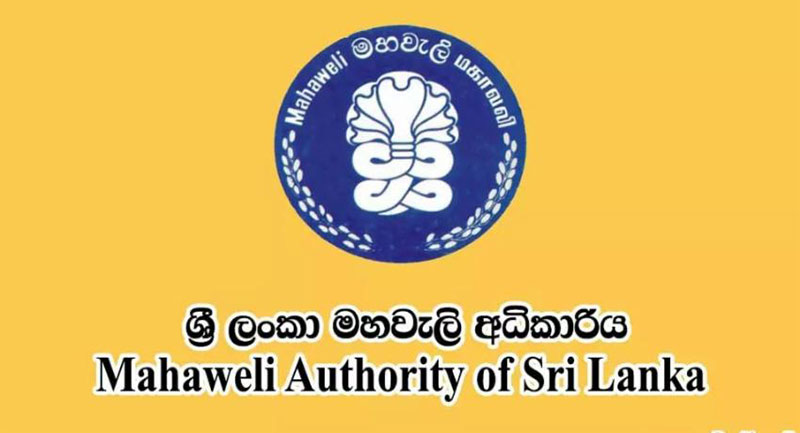
The potential available in lands under Mahaweli Project, which cover about one third of farming areas of the Dry Zone, could easily help the country become self-sufficient in healthy foods, provided it is managed properly. However, at present, the main focus of the Mahaweli Authority of Sri Lanka (MASL) is mainly on Operation & Maintenance of Canal network feeding the farms. Main purpose of the Mahaweli Restructuring & Rehabilitation Project (MRRP) funded by the World Bank in 2000 was to diversify that objective to cover enhancement of agriculture aspects also. System H Irrigation Systems covering about 20,000 Hectares commanded under Kalawewa Tank located in the Anuradhapura District was used as a pilot area to initiate this effort. However, only the Canal Rehabilitation component of the MRRP was attended because of the government policy at that time. Restructuring component is still awaiting to be completed. Only, a strategy called Water Quota was introduced under the MRRP to initiate the restructuring component. However, the management restructuring required addressing the agriculture component expected under MRRP is still not attended.
Propose Strategy
Total length of the canal network which needs seasonal maintenance is about 1,000 Km in a typical large-scale irrigation project such as Kalawewa. Main role of the Resident Project Managers (RPM) appointed to manage such projects should be to enhance the food production jointly with the Farmer Organizations. Therefore, the abbreviation used for RPM should be redefined as Resident Production Manager. The role of a Production Manager is not limited to maintenance of canal networks as adapted presently. In the current production phase, Irrigation projects should be perceived as a Food Producing “Factory” – where water is the main raw material. Farmers as the owners of the factory, play the role of the labour force of the factory. The Production Manager’s focus should be to maximize food production, deviating from Rice Only Mode, to cater the market needs earning profits for the farmers who are the owners of the “factory”. Canal systems within the project area which need regular maintenance are just “Belts” conveying raw materials (water) in a Typical Factory.
Required Management Shift
In order to implement the above management concept, there is a need for a paradigm shift in managing large scale irrigation projects. In the new approach, the main purpose of managing irrigation systems is to deliver water to the farm gate at the right time in the right quantity. It is a big challenge to operate a canal network about 1000 KM long feeding about 20,000 Hectare in a typical Irrigation System such as Kalawewa.
It is also very pathetic to observe that main clients of irrigation projects (farmers providing labor force) are now dying of various diseases caused by indiscriminate use of agrochemicals. Therefore, there is a need to minimize the damages caused to the ecosystems where these food production factories are located. Therefore, the management objectives should also be focused on producing multiple types of organically grown crops, profitably without polluting the soil and groundwater aquifers causing diseases like Kidney Failures.
Proposed Management Structure
Existing management staff should either be trained or new recruitments having Production Engineering background, should be made. Water should be perceived as the most limited input, which needs to be managed profitably jointly with the farming community. Each Production Manager could be allocated a Fixed Volume of water annually, and their performance could be measured in terms of $s earned for the country per Unit Volume of water, while economically upgrading a healthy lifestyle of the farmers by using climate smart agriculture.
In addition to the government salary, the production management staff should also be compensated in the form of incentives, calculated in proportion to income generated by them from their management areas. It should be a Win-Win situation for both farmers as well as officers responsible for managing the food production factory. Operation of the Main Canal to cater flexible needs of each factory is the main responsibility of the Resident Production Manager. In other countries, the term used to measure their performance is $ earned per gallon of water to the country, without damaging the ecosystem.
Recent Efforts
Mahaweli Authority introduced some of the concepts explained in this note during 2000 to 2006, under MRRP. It was done by operating the Distributary canals feeding each block as elongated Village Tanks. It was known as the Bulk Water Allocation (BWA) strategy. Recently an attempt was made to digitize the same concept, by independently arranging funds from ICTA / World Bank. In that project, called Eazy Water, a SMS communication system was introduced, so that they can order water from the Main Reservoir by sending a SMS, when they need rather; than depend on time tables decided by authorities as normally practiced.
Though the BWA was practiced successfully until 2015, the new generation of managers did not continue it beyond 2015.
Conclusion
The recent Cabinet decision to close down the MASL should prompt the MASL officers to reactivate the BWA approach again. Farmer Organisations at the distributary canal level responsible for managing canal networks covering about 400 Hectares can be registered as farmer cooperatives. For example, there are about 50 farmer cooperatives in a typical irrigation project such as Kalawewa. This transformation should be a gradual process which would take at least two years. I am sure the World Bank would definitely fund this project during the transition period because it is a continuation of the MRRP to address the restructuring component which was not attended by them in 2000 because of government policy at that time. System H could be used as a pilot demonstration area. Guidelines introduced under the MRRP could be used as tools to manage the main canal. World Bank funded Agribusiness Value Chain Support with CSIAP (Climate Smart Irrigated Agriculture Project) under the Ministry of Agriculture which is presently in progress could also provide necessary guidelines to initiate this project.
by Eng. Mahinda Panapitiya
Engineer who worked for Mahaweli Project since its inception
-

 Features2 days ago
Features2 days agoStarlink in the Global South
-

 Business3 days ago
Business3 days agoDaraz Sri Lanka ushers in the New Year with 4.4 Avurudu Wasi Pro Max – Sri Lanka’s biggest online Avurudu sale
-
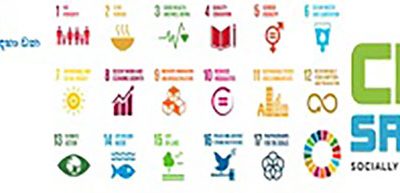
 Business4 days ago
Business4 days agoStrengthening SDG integration into provincial planning and development process
-

 Business13 hours ago
Business13 hours agoColombo Coffee wins coveted management awards
-
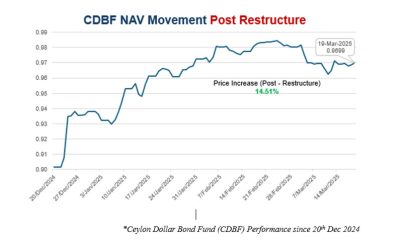
 Business3 days ago
Business3 days agoNew SL Sovereign Bonds win foreign investor confidence
-
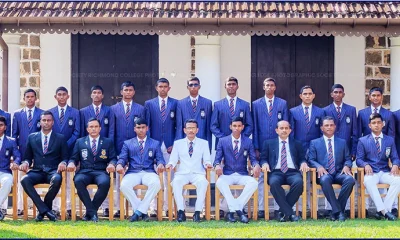
 Sports5 days ago
Sports5 days agoTo play or not to play is Richmond’s decision
-
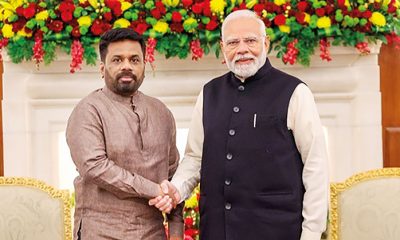
 Features2 days ago
Features2 days agoModi’s Sri Lanka Sojourn
-

 Sports4 days ago
Sports4 days agoNew Zealand under 85kg rugby team set for historic tour of Sri Lanka










